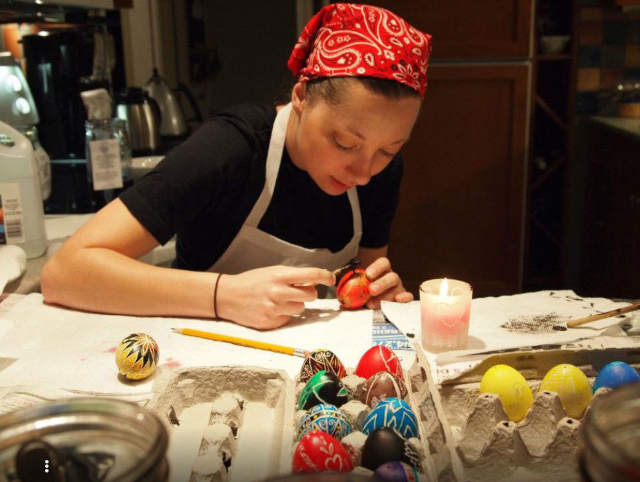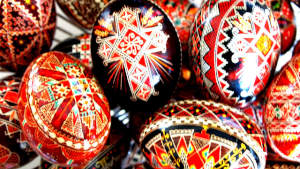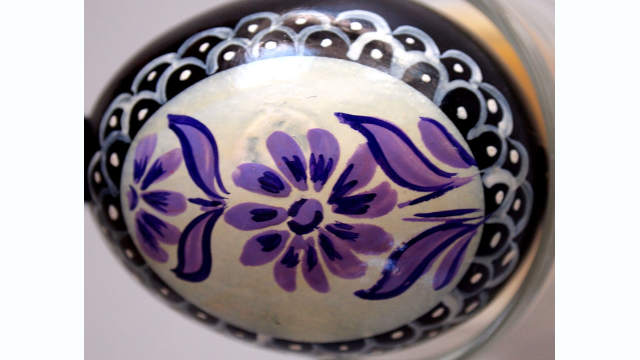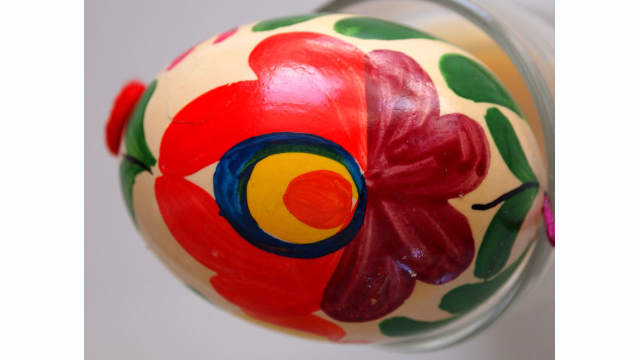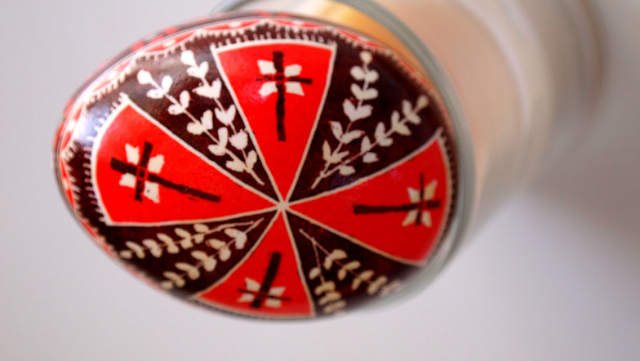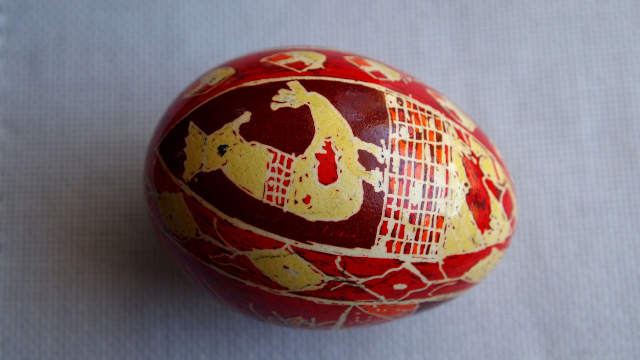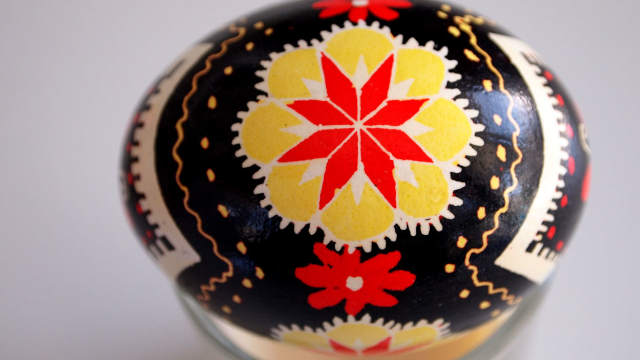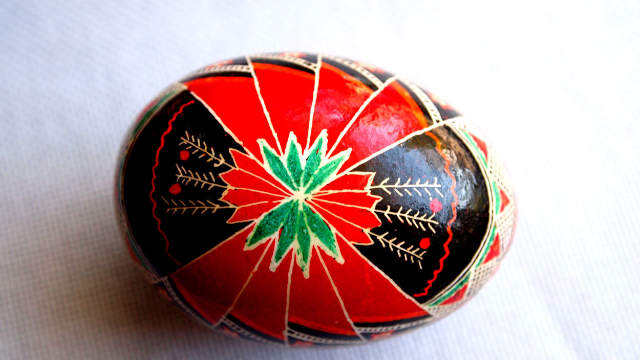In most Ukrainian families Easter is the biggest holiday of the year. It is bigger and more important than New Year’s, birthdays and even Christmas. The whole family gets together all throughout Lent to prepare the celebration of the Resurrection of Christ. There is tons of baking, embroidery and decorating of pysanky (Ukrainian Easter Eggs). The blessing of the Easter Basket is a prominent Ukrainian tradition. It is also found in other Eastern European countries such as Romania, Poland, and Russia. Everything in the basket must be NEW each year. Also, nothing from the Basket may be thrown out. After everything is eaten the crumbs are collected and placed in the fireplace. The basket is lined with a bread cloth that is usually embroidered or woven in bright colours.
The Basket contains:
Paska – This is a sweet Easter Bread, sometimes baked with golden raisins. It is decorated with braids, flowers and religious symbols like a cross.
White or Purple Candle – This is to put in the Paska, and lit during the Blessing of the baskets. Most people decorate the candle with purple ribbon or a cross. The Candle reminds us of the light of Christ.
Ham or Kovbassa – Most Orthodox Ukrainians do not eat meat during Lent, so the Easter Ham is eaten after church on Easter morning to break the fasting.
Horseradish or Red Beet Vinaigrette – These remind us of the bitterness of the Crucifixion.
Boiled Eggs – These Eggs are dyed bright red. They are a reminder of the Blood of Christ and the new life that came from it.
Pysanky – These are intricately decorated multi-coloured eggs, decorated using the wax-resist method. Each egg typically takes between 6 and 10 hours to make. Families have their own patterns passed down from mothers, grandmothers, and aunts to daughters and more recently sons. These designs are kept very private and are not usually shared even amongst friends. Pysanky are often given as treasured gifts to loved ones on Easter Sunday, and in some countries Easter Monday. The egg is presented saying “for your table”.
Cheese and butter – Dairy is not permitted during Lent for Ukrainian Orthodox, so this is used to break the fast after church on Easter Sunday.
Salt – To remind us of the gifts the Earth has provided us.
Wheat or Pussy-willows – The Wheat symbolizes the Body of Christ. In most parts of the Ukraine new wheat is not available during Easter so most provinces used pussy-willows instead.
Wine – To symbolize the Blood of Christ. If it is a child’s basket then grapes or grape juice are used.
Flowers – To symbolize the beauty of new life and the beauty that God has provided. Often the flowers will decorate the basket itself.
Chocolates, small trinkets, or embroidery – These items are generally put in by children or families with children. Sometimes small Easter gifts are put in the basket to be blessed before they are given out.
For the Blessing, the baskets are lined up and the candles are lit. The candles continue to burn for the duration of the service. At the end of the Blessing, Holy Water is sprinkled over all the baskets.
The Easter greeting is: Khrystos voskres! with the response: Voistynu Voskrese!.
The translation is: “Christ is risen! Indeed He is risen!“

